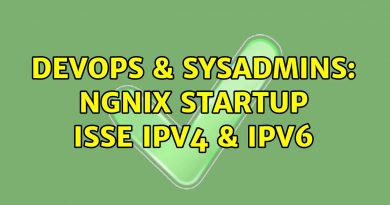IPv4 Address Classes- Classful networks
PDF link: https://tinyurl.com/tuvor8y
or http://www.en.videolearner.com/index.php/home/computer-networks/computerneworkschapetr02-2/11-computer-networks-chapter-03/31-18-ipv4-addresses
Want to buy me a cup of coffee? Click here!
https://streamlabs.com/spyrosgeorgios
Each IP address consists of two segments.
The first part is the network identifier (Network ID)
or the prefix to which the computer belongs
and the second is the Host ID,
or suffix within that particular network.
The network ID is like the street where a home is located
while the computer ID is like the number on the street where the home is located.
For example, at the address 192.168.1.12,
the first three numbers 192.168.1 define the network 192.168.1.0
and the last (12) is the computer No 12 of that network.
These two sections are differentiated depending on the network size.
This particular network, if the computer identifier has 8-bit range,
can have up to 2exponent8 = 256 computers (range of 0-255)
except for 0 and 255 which are of particular importance –
the value 0 specifies the network address and
the value 255 the broadcast address,
only values 1 to 254 remain,ie 254 computers).
If we want the network to have more than 254 computers
a further byte should be allocated for the computer ID.
Then the network could have up to 2exponent16 = 65536 computers (actually 65536-2 = 65534,)
the first and last value , as in the previous case,
have a special meaning (particular importance ) which will be discussed below).
For even larger networks (more than 65534 computers)
an other byte will be added , all together 24 bit for the computer ID.
2exponent24 = 16.777.216 computers
Note that the length of network ID is reduced accordingly
so that together with computer ID is 32 bits.
This defines classes of networks
so that there are networks of different sizes depending on the needs they serve.
See similar of large streets or avenues that have many buildings-homes
and smaller roads with fewer buildings-homes.
Thus, three classes of networks are defined according to their size, which are summarized in table 3.1.2.a below:
Determination class network with a given IP address.
Seeing an IP address, the network class to which it belongs,
is predetermined by its first octet(byte)
and in particular from its binary form
(2nd column of the previous Table), as follows:
From the above classes,
only A, B and C are used
to deliver addresses to network computers for normal use.
D and E have specific uses.
Examples of IP addresses and corresponding network classes to which they belong:
Note: The criterion for determining the network class
to which an IP address belongs is the form of the first octet
of its address in its binary equivalent.
For convenience, we use the decimal equivalent,
1-127,
128- 191,
192-223,
224-239,
240-247
Try to explain why the number of possible networks and hosts
for each class is the one shown in the corresponding table,
(note: consider the number of available bits)
Delivery IP management
IP addresses are unique in the world
and managed by a central management entity, (IANA / ICANN)
who delegates management responsibilities
in regional registers
(RIR – Regional Internet Registry)
and through them to Local Internet Registry (LIR),
or National registers (NIRs).
For Europe, the Middle East and Central Asia
peripheral Internet registrar is
RIPE NCC (Reseaux IP Europeens Network Coordination Center).
Ordinary End-users or corporate-users
they are addressed to the ISP (Internet Service Provider, ISP)
which gives them access to the Internet along with the required IP addresses,
different every time (dynamic) or
always the same (static) and normally is local registrar.
Private IP addresses
To implement private networks
whose computers do not have direct access to the Internet,
there is no need for the administrator who implements the network
to request official IP addresses
by a provider as mentioned above.
For this purpose they have been provided address ranges of all three classes
which can be used arbitrarily and without any coordination
with one of the IP address management authorities.
Therefore, for implementation of a private IP network,
addresses are ONLY from the previous table
and depending on the size of the network.
SPYROS ZYGOURIS
videolearner.com FREE INTERNET TEACHING
VISUALISED COURSES
ipv4



